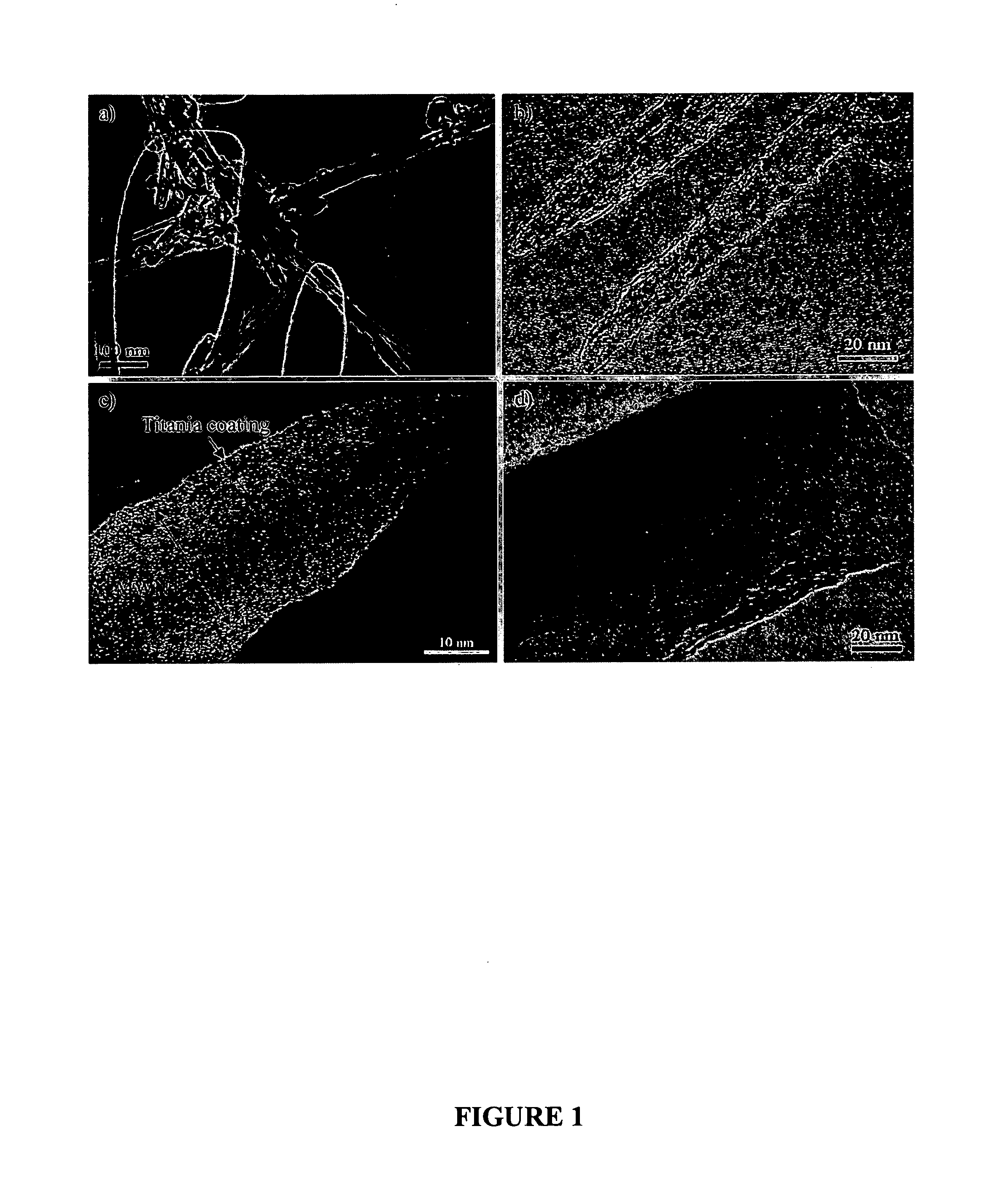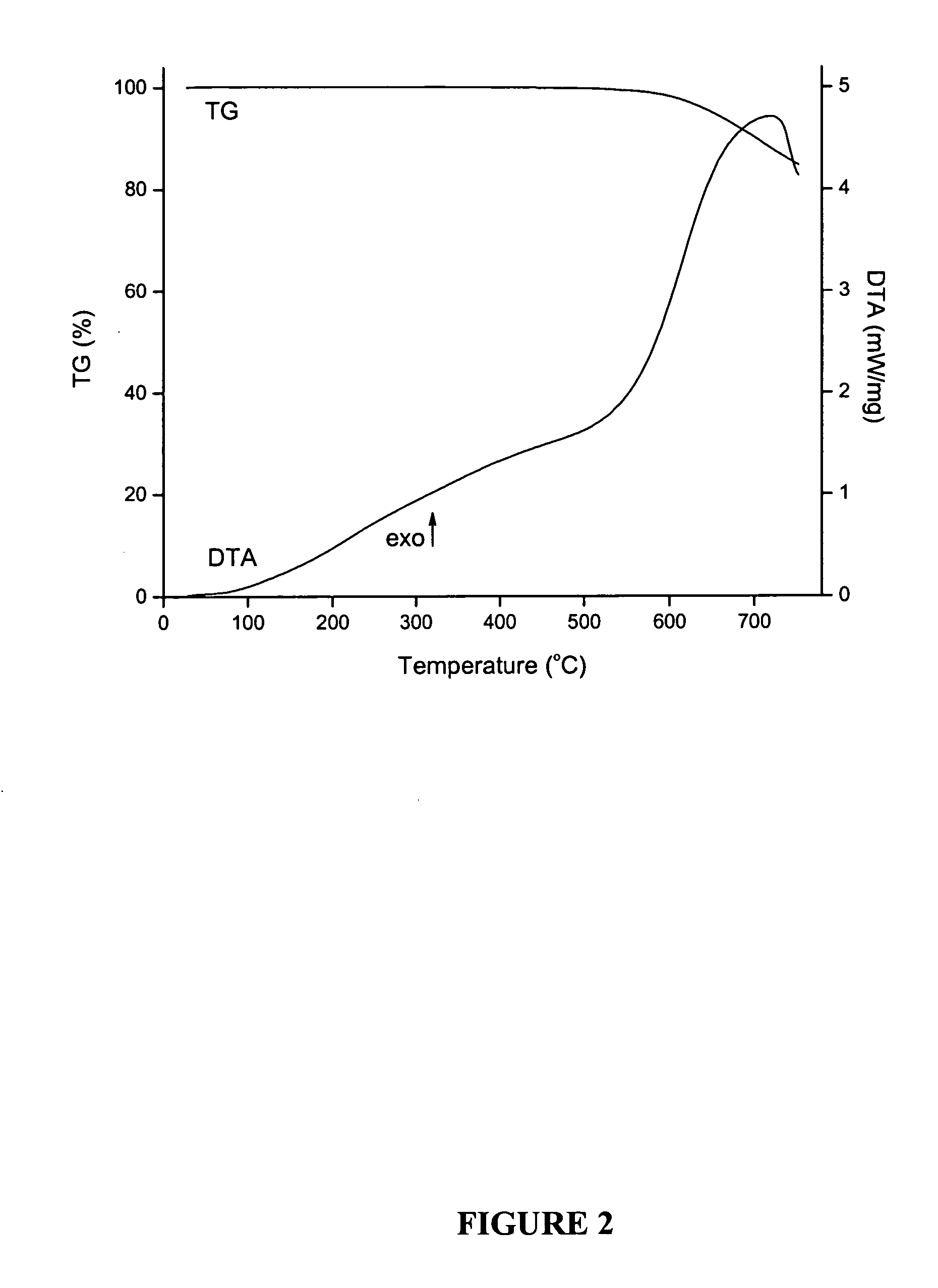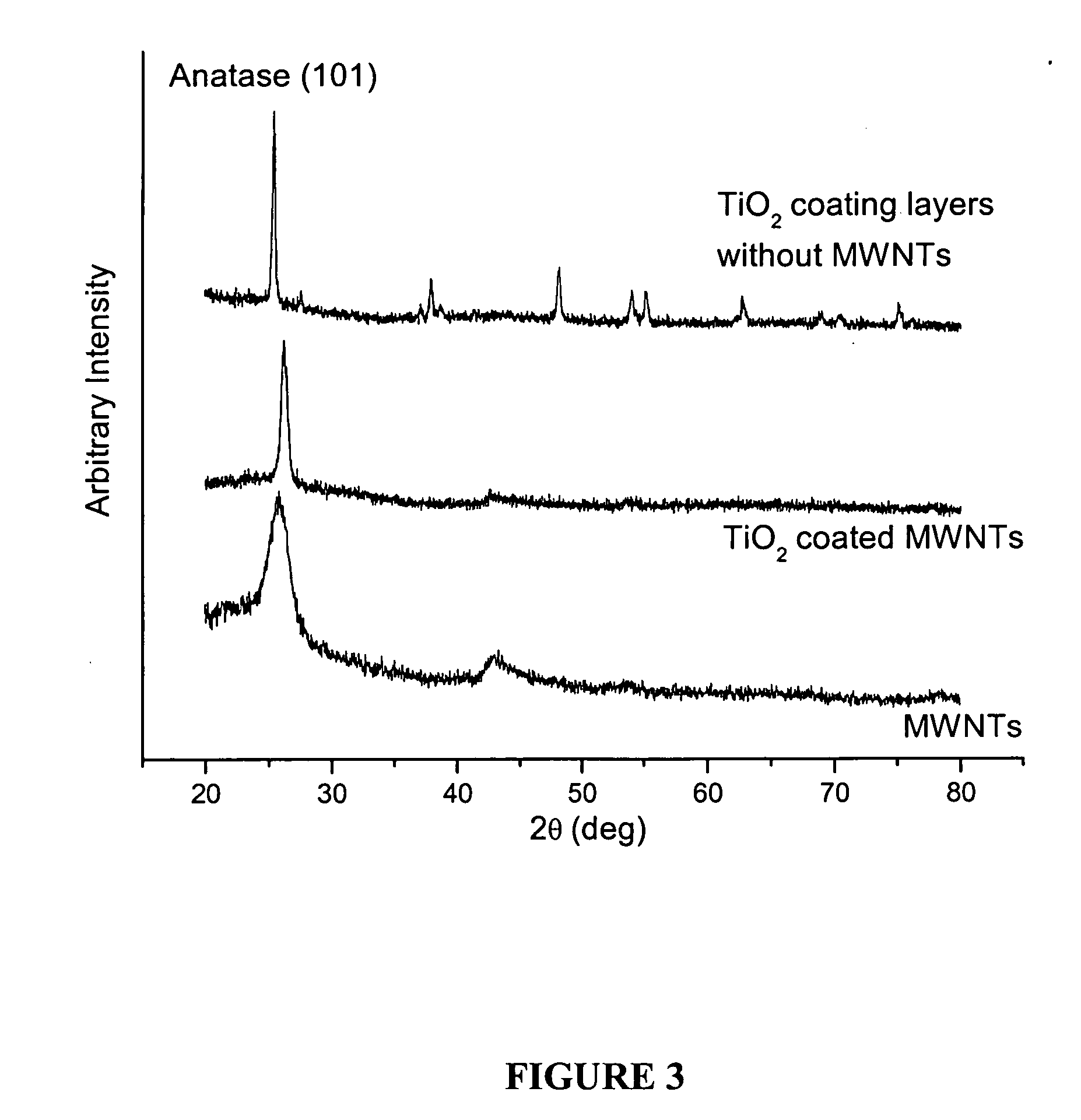Photocatalytic nanocomposites and applications thereof
a nanocomposite and photocatalyst technology, applied in the direction of catalyst activation/preparation, organic compound/hydride/coordination complex catalyst, physical/chemical process catalyst, etc., can solve the problems of loss of membrane structure and membrane function, lack of conventional method efficiency, and certain bacteria that can be harmful or even deadly to humans and animals. , to achieve the effect of effective destruction of biological agents
- Summary
- Abstract
- Description
- Claims
- Application Information
AI Technical Summary
Benefits of technology
Problems solved by technology
Method used
Image
Examples
example 1
[0037] Synthesis and Characterization of TiO2-MWNT Nanocomposites: Commercially available arc-discharged MWNTs (Alfa Aesar, 3-24 nm outer diameter, 0.5-5 μm) were used as templates and the functionalization of the carbon surfaces was performed by chemical oxidation according to a method disclosed by Tsang et al., Nature, vol. 372, pp. 159-162, 1994. Oxidation was performed by dispersing 300 mg of MWNTs in 200 mL of 70% HNO3 by sonification for 30 minutes followed by refluxed with magnetic stirring at 140° C. for 10 hours. In this manner the MWNT surface was modified so that a thin layers of metal oxides could be attached via sol-gel processing. Although not used in this Example, uniformity of the suspension of the nanotubes in the solution can be aided by stabilizing agents, such as surfactants (e.g. sodium dodecyl sulfate (SDS)) and certain polymers.
[0038] The nanotubes obtained had an outer diameter less than 20 nm and their surfaces were partially covered with acidic functional ...
example 2
[0042] Spore Preparation and Biocidal Test: B. cereus ATTC 2 was used as a surrogate of Bacillus anthracis. The bacteria were inoculated in 500 mL Erlenmeyer flasks containing 99 mL of Columbia broth supplemented with 1 mL of 10 mM MnSO4.H2O. Foam plugs were used to allow air access and prevent contamination. Liquid cultures were incubated for three days at 35±2° C. an orbital incubator-shaker (Model C24, New Brunswick Scientific) at 250 rev / min. Spores were harvested and purified using the lysozyme treatment. The heat shock treatment (80° C., 10 minutes) was applied following the purification process to ensure killing of vegetative cells. Spore suspensions were stored in sterile deionized water and refrigerated at 4° C. until use. Three types of spore suspensions were prepared; (i) the control sample by suspending 10 mL of spore suspension in 20 mL of sterile deionized water, (ii) the experimental sample with 3 mg of commercial TiO2 nanoparticles (Degussa P25, primarily anatase wit...
example 3
[0052] Photocatalytic activity of TiO2-MWNT in visible light: The photocatalytic activity of TiO2-MWNT was displayed by the degradation of a dye in aqueous solution. A 3 mg sample of TiO2-MWNT was dispersed in 50 mL of a 5 ppm PROCION RED MX-5B™ (naphthalenedisulfonic acid, 5-((4,6-dichloro-s-triazin-2-yl)amino)-4-hydroxy-3-(phenylazo)-, disodium salt) solution by sonification for 20 minutes. The suspension was then placed under halogen lamps of a total power of 50 W / m2 which had no output of UV light. Every 20 minutes a sample was removed and the dye concentration was measured by UV-VIS spectroscopy. As can be seen in FIG. 6, the concentration of dye reduced to approximately half its initial concentration in 100 minutes. Under similar conditions with the Degussa P25 TiO2 control, no measurable degradation of the dye occurred over the two hour period.
PUM
| Property | Measurement | Unit |
|---|---|---|
| Temperature | aaaaa | aaaaa |
| Temperature | aaaaa | aaaaa |
| Thickness | aaaaa | aaaaa |
Abstract
Description
Claims
Application Information
 Login to View More
Login to View More - R&D
- Intellectual Property
- Life Sciences
- Materials
- Tech Scout
- Unparalleled Data Quality
- Higher Quality Content
- 60% Fewer Hallucinations
Browse by: Latest US Patents, China's latest patents, Technical Efficacy Thesaurus, Application Domain, Technology Topic, Popular Technical Reports.
© 2025 PatSnap. All rights reserved.Legal|Privacy policy|Modern Slavery Act Transparency Statement|Sitemap|About US| Contact US: help@patsnap.com



